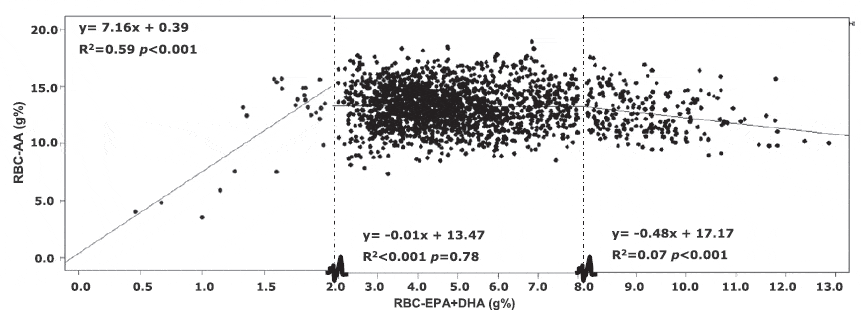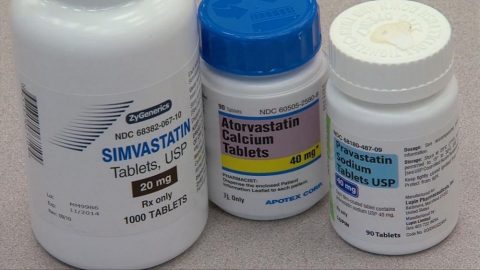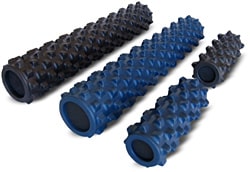
BrinkZone Author Monica “Brains and Body” Mollica shows what healthy muscles look like!
To most people, the mere word “muscles” brings to mind huge muscular bodybuilders. The importance of muscle mass, strength, and power for physical performance in exercise and sports is obvious. However, muscles aren’t just for show. Here I will explain why….
Role of Muscle in the Body’s Metabolism
Muscle (or more precisely skeletal muscle) comprises around 45% and 35% of an average young man’s and woman’s body weight, respectively.[1] An adequate muscle mass is essential to ensure basic physiological functions such as movements, strength and respiration.[2] In order for us to survive, certain organs and tissues and, like the brain, heart, liver and skin, rely on a steady supply of amino acids via the blood to serve as precursors for the synthesis of new proteins to balance the continuous rate of protein breakdown that normally occurs as part of protein metabolism.
In the absence of nutrient intake (for example in between meals and during sleep) muscle protein serves as the principal reservoir to replace blood amino acid taken up by other tissues.[3-5] In the fasting state, blood amino acids serve not only as precursors for the synthesis of proteins but also as precursors for hepatic gluconeogenesis.[6] This is how the body is able to keep the protein mass of essential tissues and organs, as well as blood glucose levels, relatively constant despite intermittent food intake.
The primary fate of ingested amino acids is incorporation into muscle protein to replete the reserves of amino acids lost in the fasting state. Under typical conditions, gains in muscle protein mass in the fed state balance the loss of muscle protein mass in the fasted state. When combined with proper nutrition and resistance training, muscle protein gains will exceed muscle protein losses, which results in a net positive muscle protein balance. Over time, this leads to muscle growth.
Muscle, together with the liver, is also the main place for storage of glucose as glycogen after meals, and therefore plays an important role in glucose disposal and glucose metabolism.[7-13] In line with this, a lower muscle mass is associated with higher fasting and after-meal blood glucose levels, as well as elevated insulin levels.[14] Higher levels of glucose and/or insulin reflect some degree of insulin resistance. This suggests that the association of higher glucose and insulin levels with reduced muscle strength [15-17] is mediated, at least in part, by reduced muscle mass.
Muscle and Insulin Resistance – how do your muscles protect you?
A larger muscle mass is associated with better insulin sensitivity (less insulin resistance), lower levels of HbA1c (glycosylated hemoglobin, a marker of long-term blood glucose levels) as well as a reduced risk for both pre-diabetes and overt type-2 diabetes, in both men and women, old and young.[14, 18] It has been suggested that insulin resistance it what drives the association between elevated blood glucose levels (hyperglycemia) and cardiovascular disease risk; in other words, insulin resistance is largely responsible for the relationship between blood glucose levels and cardiovascular disease risk.[19]
And here comes the kicker; increases in muscle mass above average levels are associated with additional protection against insulin resistance and elevated blood glucose levels (i.e. pre-diabetes).[14] After adjusting for age, ethnicity, sex, and obesity and waist circumference, each 10% increase in muscle mass index (calculated as muscle mass divided by height squared) is associated with a 14% reduction in insulin resistance and a 23% reduction in prediabetes risk.[14] Needless to say, this only applies to increases in muscle mass that are achieved by resistance training and proper nutrition. Use of anabolic steroids causes insulin resistance despite marked increases in muscle mass.[20]
Muscle also protects against the metabolic syndrome; a greater muscle mass is associated with a lower prevalence of the metabolic syndrome [21], as well as a reduced risk of developing the metabolic syndrome in the future.[22] Notably, muscle mass and strength are strong protective factors against the metabolic syndrome, independent of insulin resistance and abdominal fat accumulation.[21]
Insulin Resistance – things you didn’t know
The protection conferred by muscle mass against development of insulin resistance and metabolic syndrome should be highlighted. Insulin resistance is very common in the general population. The prevalence of insulin resistance has been estimated to be as high as 88% in people with blood lipid (cholesterol, fat and lipoprotein) abnormalities, such as elevated trigycerides (blood fats) and low HDL (the “good” cholesterol).[23] This, coupled with the fact that the majority of U.S. adults are affected by some form of lipid abnormality [24], shows that insulin resistance is not a problem confined to diabetes, but a mass problem afflicting the large majority of people. It may come as a surprise to many that in people with elevated triglycerides (blood fats) and low HDL (the “good” cholesterol), insulin resistance is as common as in type 2 diabetics.[23]
It is also relatively unknown that in the general population, insulin resistance can be found even in the absence of any major metabolic disorders [23], and 25% of apparently healthy people are severely insulin resistant.[25] This can be detected by elevated fasting insulin and glucose levels, and/or after-meal blood sugar spikes above 140 mg/dL [26, 27], and may be an indicator of “silent” atherosclerosis.[28]
Among apparently healthy people, insulin-stimulated glucose uptake can vary threefold between the most insulin-sensitive and most insulin-resistant individuals.[27] Furthermore, the absolute amount of glucose uptake in the subjects who are the most insulin resistant is comparable with that of people with pre-diabetes (impaired glucose tolerance) and frank type 2 diabetes.[29]
Insulin resistance is a predictor of future aging-related diseases such as cardiovascular disease and diabetes [30-42], and causes impairments in physiological processes that contribute to premature aging.[43-46] For example, mechanistic experiments show that insulin resistance accelerates atherosclerosis.[47, 48] In apparently healthy people, 1 out of 3 who are insulin resistant at baseline develop either heart disease or diabetes 6 years later, while insulin sensitive people don’t.[30] Insulin resistance seems to be the common metabolic defect underlying both type 2 diabetes, dyslipidemia (abnormal amount of lipids [cholesterol and/or fat] and lipoproteins in the blood), cardiovascular disease (including high blood pressure) and obesity.[49, 50]
Insulin – a vascular hormone
In addition to mediating metabolic effects in muscle, liver and adipose tissue, insulin is a vascular hormone.[51-53] In physiological doses and in lean healthy insulin sensitive people, insulin is a vasodilator due to its stimulation of nitric oxide production.[53] However, insulin’s beneficial vascular actions are impaired in insulin-resistant conditions such as obesity, type 2 diabetes and high blood pressure, in whom it contributes to development of cardiovascular disease.[53] In people who are insulin resistant, insulin actually causes vasoconstriction.[53]
Insulin resistance – even in the absence of overt diabetes or the metabolic syndrome – reduces nitric oxide production [47, 53, 54] and causes endothelial (i.e. blood vessel) dysfunction [47, 48, 53-56], which in turn may cause erectile dysfunction.[57, 58] This is why erectile function can be seen as a “window” on cardiovascular health.[59] Thus, gaining muscle to prevent insulin resistance comes with both immediate and long-term benefits.
Negative effect of Insulin Resistance on Muscle – a vicious circle
The relation between muscle and insulin resistance is bi-directional. As stated above, a low muscle mass increases the risk for developing insulin resistance and its consequences. However, insulin resistance – once developed – also negatively impacts muscle in several ways that speed up age-related muscle mass loss.[60, 61] For example, insulin resistance results in decreased stimulation of muscle protein synthesis to anabolic stimuli like protein intake and resistance exercise, and also increases muscle protein breakdown.[62-65]
This explains the finding that high fasting and after-meal levels of glucose and insulin independently are associated with muscle loss, even in individuals without diabetes.[16] This suggests that insulin resistance may be a risk factors for accelerated muscle loss.
It has also been demonstrated that insulin resistance is not only associated with impaired nitric oxide production but also with a reduced muscle capillarization, independently of age, body mass, adiposity, and resting energy metabolism.[66] This in turn impairs oxygen and nutrient delivery to muscle and reduces performance, as well as interferes with adaptations to any exercise program.
Role of Muscle in Chronic Disease
Both low muscle mass and poor muscle strength are highly prevalent and important risk factors for disability, morbidity and mortality in individuals as they age.[61] Chronic diseases related to poor lifestyle behaviors account for more than two-thirds of deaths in the United States [67], and detrimental alterations in muscle metabolism and loss of muscle mass (muscle wasting) play an important role in disease outcomes.[68] Heart disease and cancer are the major chronic diseases suffered in the Western world [67], and both cardiac failure and cancer are often associated with rapid and extensive loss of muscle mass and strength, and marked deterioration in metabolic function.[2, 69, 70] During critical illness, excessive loss of muscle mass caused by alterations in muscle metabolism [2] – for example an increased expression of muscle catabolic pathways and myostatin (which inhibits muscle growth) [71] – negatively impacts survival.
Another chronic condition – sarcopenia – is caused by muscle loss.
Sarcopenia is the progressive age-related loss of muscle mass and function, and contributes to development of frailty.[72-75] Sarcopenia is a widespread syndrome that has a devastating effect on quality of life, activities of daily living, independence, and ultimately, survival.[72-75] A sub-optimal muscle mass isn’t just an issue for the elderly, it can also occur in younger people (in whom it is called myopenia) and has detrimental consequences regardless of age.[76]
Another chronic disease where muscle mass (and exercise) is of importance is osteoporosis. Mechanical force on bone is essential for increasing and maintaining bone strength and mass [77]. Whereas body weight and weight-bearing exercises provide a direct mechanical force on bones, the largest loads on bone originate from muscle contractions [77]. Correlations between grip strength and bone area, bone mineral content, and bone mineral density in both healthy athletes [78] and stroke patients [79] support the notion that muscle contractions play a significant role in bone strength and mass. In addition, the positive correlation between body weight and bone mass can be explained on the basis of the force exerted on bone by muscle contractions, in that it takes more force per unit area to move heavier bodies. Furthermore, changes in bone mass and muscle strength move in the same direction over the life span [77]. Although it is debatable whether it is muscle strength or simply muscle mass that is important in determining bone strength and bone mass, is has been shown that muscle mass correlates positively with bone mineral content and bone mineral density [80]. Thus, maintenance of adequate bone strength and density with aging is highly dependent on the maintenance of adequate muscle mass and function.
Resistance Exercise Training – building muscle is for everyone!
Exercise, both aerobic and resistance, dose-dependently increase insulin sensitivity.[81, 82] Resistance exercise in particular has been shown to reverse aging in human muscle tissue [83] and attenuates major hallmarks of aging.[84] Resistance exercise training effectively elicits muscle gains even in aging adults, but provides superior effectiveness if started early in life.[85]
Resistance exercise training is well documented to be beneficial in chronic diseases and conditions that are associated with a low muscle mass [2, 69, 70, 72, 74, 75]. Studies show that resistance exercise training may serve as an effective countermeasure to some of the adverse consequences of the metabolic syndrome, fibromyalgia and rheumatoid arthritis.[86] Evidence showing that resistance exercise reduces insulin resistance or improves insulin action comes both from indirect biomarkers, such as glycosylated haemoglobin (HbA1c), and insulin responses to oral glucose tolerance tests, as well as from more direct procedures such as hyperglycemic and hyperinsulinemic-euglycaemic clamp techniques.[86] it is notable that the improvement in insulin sensitivity and glucose tolerance with resistance exercise training is not a mere consequence of the increase in muscle mass associated but also likely a result of qualitative changes in resistance-trained muscle.[87]
There is also consistent evidence for the effectiveness of resistance exercise in reducing triglyceride levels.[86] Studies also show that cognitive function may improve with resistance exercise, and the prevalence of Alzheimer’s disease is inversely associated with muscle mass and strength, i.e. stronger people with a larger muscle mass tend to be less affected by Alzheimer’s.[86, 88] One study measured muscle strength in several muscle groups in the arms, legs and trunk, and summarized into a composite index of muscle strength, in apparently healthy older persons without dementia.[88] After a follow-up of 3.6 years is was found that each 1-unit increase in muscle strength at baseline was associated with a 43% decrease in the risk of Alzheimer’s, independently of physical activity, BMI, cardiovascular risk factors, heart disease and lung function.[88] Increased muscle strength was associated with a slower rate of decline in global cognitive function, as well as a decreased risk of mild cognitive impairment (the precursor to Alzheimer’s.[88]
Muscle also prevents body fat gain, and thus improves both physical/esthetic appearance as well as obesity associated risk factors. The role of muscle in fat gain prevention is a topic I will cover in more depth in an upcoming article.
Muscle and Longevity – is there a relation?
With all the beneficial health effects of an increased muscle mass, one may guess it beneficially impacts longevity. And rightly so. A larger muscle mass is associated with a greatly reduced mortality risk, independently of fat mass and cardiovascular and metabolic risk factors.[89-92] Greater muscle strength also reduces mortality risk.[93] Thus, anabolic metabolic pathways that promote muscle growth (which is correlated with muscle strength) seem to be associated with longevity.
Bottom Line
Now you have some legit and scientifically supported arguments to present when you encounter opposition to your passion for training, nutrition and muscle building.
The research presented here underscores the importance of muscle for health and longevity, and clearly shows that gaining muscle is not just about getting in shape and looking good. Muscle deserves getting more attention than it has been, and interventions to increase muscle mass – such as resistance training combined with proper nutrition – should be encouraged for everybody.
Simply put, muscles aren’t just for show!

Monica Mollica holds a Master degree in Nutrition from the University of Stockholm / Karolinska Institue, Sweden. She has also done PhD level course work at renowned Baylor University, TX.
Having lost her father in a lifestyle induced heart attack at an age of 48, she is specializing in cardiovascular health and primordial/primary prevention. She is a strong advocate of early intervention in adolescence and young adulthood, and the importance of lifestyle habits for health promotion at all ages.
Today, Monica is sharing her solid medical research insights and real-life hands on experience and passion by offering nutrition / supplementation / exercise / health consultation services, and working as a medical writer, specializing in health promotion, fitness and anti-aging.
She is currently in the process of writing a book on testosterone, covering health related issues for both men and women.
———————————————————————————————————————————————–
References:
1. Gallagher, D., et al., Organ-tissue mass measurement allows modeling of REE and metabolically active tissue mass. Am J Physiol, 1998. 275(2 Pt 1): p. E249-58.
2. Lenk, K., G. Schuler, and V. Adams, Skeletal muscle wasting in cachexia and sarcopenia: molecular pathophysiology and impact of exercise training. J Cachex Sarcopenia Muscle, 2010. 1(1): p. 9-21.
3. Biolo, G., X.J. Zhang, and R.R. Wolfe, Role of membrane transport in interorgan amino acid flow between muscle and small intestine. Metabolism, 1995. 44(6): p. 719-24.
4. Felig, P., et al., Amino acid metabolism during prolonged starvation. J Clin Invest, 1969. 48(3): p. 584-94.
5. Matthews, D.E., Proteins and Amino Acids, in Modern Nutrition in Health and Disease, M.E. Shils, et al., Editors. 2006.
6. Felig, P., The glucose-alanine cycle. Metabolism, 1973. 22(2): p. 179-207.
7. DeFronzo, R.A., R.C. Bonadonna, and E. Ferrannini, Pathogenesis of NIDDM. A balanced overview. Diabetes Care, 1992. 15(3): p. 318-68.
8. DeFronzo, R.A. and D. Tripathy, Skeletal muscle insulin resistance is the primary defect in type 2 diabetes. Diabetes Care, 2009. 32 Suppl 2: p. S157-63.
9. Abdul-Ghani, M.A. and R.A. DeFronzo, Pathogenesis of insulin resistance in skeletal muscle. J Biomed Biotechnol, 2010. 2010: p. 476279.
10. Thiebaud, D., et al., The effect of graded doses of insulin on total glucose uptake, glucose oxidation, and glucose storage in man. Diabetes, 1982. 31(11): p. 957-63.
11. Ferrannini, E., et al., The disposal of an oral glucose load in healthy subjects. A quantitative study. Diabetes, 1985. 34(6): p. 580-8.
12. Katz, L.D., et al., Splanchnic and peripheral disposal of oral glucose in man. Diabetes, 1983. 32(7): p. 675-9.
13. Defronzo, R.A., Banting Lecture. From the triumvirate to the ominous octet: a new paradigm for the treatment of type 2 diabetes mellitus. Diabetes, 2009. 58(4): p. 773-95.
14. Kalyani, R.R., et al., Glucose and insulin measurements from the oral glucose tolerance test and relationship to muscle mass. J Gerontol A Biol Sci Med Sci, 2012. 67(1): p. 74-81.
15. Lazarus, R., D. Sparrow, and S.T. Weiss, Handgrip strength and insulin levels: cross-sectional and prospective associations in the Normative Aging Study. Metabolism, 1997. 46(11): p. 1266-9.
16. Barzilay, J.I., et al., Insulin resistance is associated with decreased quadriceps muscle strength in nondiabetic adults aged >or=70 years. Diabetes Care, 2009. 32(4): p. 736-8.
17. Sayer, A.A., et al., Type 2 diabetes, muscle strength, and impaired physical function: the tip of the iceberg? Diabetes Care, 2005. 28(10): p. 2541-2.
18. Lee, S.W., et al., Appendicular skeletal muscle mass and insulin resistance in an elderly korean population: the korean social life, health and aging project-health examination cohort. Diabetes Metab J, 2015. 39(1): p. 37-45.
19. Faerch, K., B. Bergman, and L. Perreault, Does insulin resistance drive the association between hyperglycemia and cardiovascular risk? PLoS One, 2012. 7(6): p. e39260.
20. Cohen, J.C. and R. Hickman, Insulin resistance and diminished glucose tolerance in powerlifters ingesting anabolic steroids. J Clin Endocrinol Metab, 1987. 64(5): p. 960-3.
21. Atlantis, E., et al., Inverse associations between muscle mass, strength, and the metabolic syndrome. Metabolism, 2009. 58(7): p. 1013-22.
22. Park, B.S. and J.S. Yoon, Relative skeletal muscle mass is associated with development of metabolic syndrome. Diabetes Metab J, 2013. 37(6): p. 458-64.
23. Bonora, E., et al., Prevalence of insulin resistance in metabolic disorders: the Bruneck Study. Diabetes, 1998. 47(10): p. 1643-9.
24. Toth, P.P., D. Potter, and E.E. Ming, Prevalence of lipid abnormalities in the United States: the National Health and Nutrition Examination Survey 2003-2006. J Clin Lipidol, 2012. 6(4): p. 325-30.
25. Reaven, G.M., Banting lecture 1988. Role of insulin resistance in human disease. Diabetes, 1988. 37(12): p. 1595-607.
26. Standards of medical care in diabetes–2015: summary of revisions. Diabetes Care, 2015. 38 Suppl: p. S4.
27. Hollenbeck, C. and G.M. Reaven, Variations in insulin-stimulated glucose uptake in healthy individuals with normal glucose tolerance. J Clin Endocrinol Metab, 1987. 64(6): p. 1169-73.
28. Laakso, M., et al., Asymptomatic atherosclerosis and insulin resistance. Arterioscler Thromb, 1991. 11(4): p. 1068-76.
29. Golay, A., Y.D. Chen, and G.M. Reaven, Effect of differences in glucose tolerance on insulin’s ability to regulate carbohydrate and free fatty acid metabolism in obese individuals. J Clin Endocrinol Metab, 1986. 62(6): p. 1081-8.
30. Facchini, F.S., et al., Insulin resistance as a predictor of age-related diseases. J Clin Endocrinol Metab, 2001. 86(8): p. 3574-8.
31. Ginsberg, H.N., Insulin resistance and cardiovascular disease. J Clin Invest, 2000. 106(4): p. 453-8.
32. DeFronzo, R.A., Insulin resistance: a multifaceted syndrome responsible for NIDDM, obesity, hypertension, dyslipidaemia and atherosclerosis. Neth J Med, 1997. 50(5): p. 191-7.
33. Reaven, G., Insulin resistance and coronary heart disease in nondiabetic individuals. Arterioscler Thromb Vasc Biol, 2012. 32(8): p. 1754-9.
34. Preuss, H.G., Effects of glucose/insulin perturbations on aging and chronic disorders of aging: the evidence. J Am Coll Nutr, 1997. 16(5): p. 397-403.
35. Gast, K.B., et al., Insulin resistance and risk of incident cardiovascular events in adults without diabetes: meta-analysis. PLoS One, 2012. 7(12): p. e52036.
36. Mercurio, V., et al., Insulin resistance: Is it time for primary prevention? World J Cardiol, 2012. 4(1): p. 1-7.
37. Kim, J.A., et al., Reciprocal relationships between insulin resistance and endothelial dysfunction: molecular and pathophysiological mechanisms. Circulation, 2006. 113(15): p. 1888-904.
38. Bhat, S.L., et al., Beyond fasting plasma glucose: the association between coronary heart disease risk and postprandial glucose, postprandial insulin and insulin resistance in healthy, nondiabetic adults. Metabolism, 2013. 62(9): p. 1223-6.
39. Pansuria, M., et al., Insulin resistance, metabolic stress, and atherosclerosis. Front Biosci (Schol Ed), 2012. 4: p. 916-31.
40. Barr, E.L., et al., Risk of cardiovascular and all-cause mortality in individuals with diabetes mellitus, impaired fasting glucose, and impaired glucose tolerance: the Australian Diabetes, Obesity, and Lifestyle Study (AusDiab). Circulation, 2007. 116(2): p. 151-7.
41. Rader, D.J., Effect of insulin resistance, dyslipidemia, and intra-abdominal adiposity on the development of cardiovascular disease and diabetes mellitus. Am J Med, 2007. 120(3 Suppl 1): p. S12-8.
42. Laakso, M. and J. Kuusisto, Insulin resistance and hyperglycaemia in cardiovascular disease development. Nat Rev Endocrinol, 2014. 10(5): p. 293-302.
43. Avogaro, A., et al., The endothelium abridges insulin resistance to premature aging. J Am Heart Assoc, 2013. 2(3): p. e000262.
44. Avogaro, A., S.V. de Kreutzenberg, and G.P. Fadini, Insulin signaling and life span. Pflugers Arch, 2010. 459(2): p. 301-14.
45. Rosenbloom, A.L., et al., Progeria: insulin resistance and hyperglycemia. J Pediatr, 1983. 102(3): p. 400-2.
46. Gardner, J.P., et al., Rise in insulin resistance is associated with escalated telomere attrition. Circulation, 2005. 111(17): p. 2171-7.
47. Li, Q., et al., Induction of vascular insulin resistance and endothelin-1 expression and acceleration of atherosclerosis by the overexpression of protein kinase C-beta isoform in the endothelium. Circ Res, 2013. 113(4): p. 418-27.
48. Rask-Madsen, C., et al., Loss of insulin signaling in vascular endothelial cells accelerates atherosclerosis in apolipoprotein E null mice. Cell Metab, 2010. 11(5): p. 379-89.
49. Kashyap, S.R. and R.A. Defronzo, The insulin resistance syndrome: physiological considerations. Diab Vasc Dis Res, 2007. 4(1): p. 13-9.
50. DeFronzo, R.A., Insulin resistance, hyperinsulinemia, and coronary artery disease: a complex metabolic web. J Cardiovasc Pharmacol, 1992. 20 Suppl 11: p. S1-16.
51. Zeng, G. and M.J. Quon, Insulin-stimulated production of nitric oxide is inhibited by wortmannin. Direct measurement in vascular endothelial cells. J Clin Invest, 1996. 98(4): p. 894-8.
52. Duckles, S.P. and V.M. Miller, Hormonal modulation of endothelial NO production. Pflugers Arch, 2010. 459(6): p. 841-51.
53. Steinberg, H.O. and A.D. Baron, Vascular function, insulin resistance and fatty acids. Diabetologia, 2002. 45(5): p. 623-34.
54. Du, X., et al., Insulin resistance reduces arterial prostacyclin synthase and eNOS activities by increasing endothelial fatty acid oxidation. J Clin Invest, 2006. 116(4): p. 1071-80.
55. Hsueh, W.A. and M.J. Quinones, Role of endothelial dysfunction in insulin resistance. Am J Cardiol, 2003. 92(4A): p. 10J-17J.
56. Quinones, M.J., S.B. Nicholas, and C.J. Lyon, Insulin resistance and the endothelium. Curr Diab Rep, 2005. 5(4): p. 246-53.
57. Guay, A.T., ED2: erectile dysfunction = endothelial dysfunction. Endocrinol Metab Clin North Am, 2007. 36(2): p. 453-63.
58. Potenza, M.A. and M. Montagnani, Abnormal insulin signaling: early detection of silent coronary artery disease-erectile dysfunction? Curr Pharm Des, 2008. 14(35): p. 3737-48.
59. Kirby, M., G. Jackson, and U. Simonsen, Endothelial dysfunction links erectile dysfunction to heart disease. Int J Clin Pract, 2005. 59(2): p. 225-9.
60. Guillet, C. and Y. Boirie, Insulin resistance: a contributing factor to age-related muscle mass loss? Diabetes Metab, 2005. 31 Spec No 2: p. 5S20-5S26.
61. Kalyani, R.R., M. Corriere, and L. Ferrucci, Age-related and disease-related muscle loss: the effect of diabetes, obesity, and other diseases. Lancet Diabetes Endocrinol, 2014. 2(10): p. 819-29.
62. Burd, N.A., S.H. Gorissen, and L.J. van Loon, Anabolic resistance of muscle protein synthesis with aging. Exerc Sport Sci Rev, 2013. 41(3): p. 169-73.
63. Churchward-Venne, T.A., L. Breen, and S.M. Phillips, Alterations in human muscle protein metabolism with aging: Protein and exercise as countermeasures to offset sarcopenia. Biofactors, 2014. 40(2): p. 199-205.
64. Dickinson, J.M., E. Volpi, and B.B. Rasmussen, Exercise and nutrition to target protein synthesis impairments in aging skeletal muscle. Exerc Sport Sci Rev, 2013. 41(4): p. 216-23.
65. Murton, A.J., Muscle protein turnover in the elderly and its potential contribution to the development of sarcopenia. Proc Nutr Soc, 2015: p. 1-10.
66. Solomon, T.P., et al., Progressive hyperglycemia across the glucose tolerance continuum in older obese adults is related to skeletal muscle capillarization and nitric oxide bioavailability. J Clin Endocrinol Metab, 2011. 96(5): p. 1377-84.
67. Anderson, R.N. and B.L. Smith, Deaths: leading causes for 2002. National Vital Statistics reports. . 2005, National Center for Health Statistics, 2005. (No. 17.).
68. Zamora, E., A. Galan, and R. Simo, [Role of myostatin in wasting syndrome associated with chronic diseases]. Med Clin (Barc), 2008. 131(15): p. 585-90.
69. Kung, T., et al., Cachexia in heart disease: highlights from the ESC 2010. J Cachex Sarcopenia Muscle, 2011. 2(1): p. 63-69.
70. Lenk, K., et al., Exercise training leads to a reduction of elevated myostatin levels in patients with chronic heart failure. Eur J Cardiovasc Prev Rehabil, 2011.
71. Bamman, M.M., Regulation of muscle size in humans: role of myostatin? J Musculoskelet Neuronal Interact, 2008. 8(4): p. 342-3.
72. Burton, L.A. and D. Sumukadas, Optimal management of sarcopenia. Clin Interv Aging, 2010. 5: p. 217-28.
73. Evans, W.J., What is sarcopenia? J Gerontol A Biol Sci Med Sci, 1995. 50 Spec No: p. 5-8.
74. Rolland, Y., et al., Treatment strategies for sarcopenia and frailty. Med Clin North Am, 2011. 95(3): p. 427-38, ix.
75. Waters, D.L., et al., Advantages of dietary, exercise-related, and therapeutic interventions to prevent and treat sarcopenia in adult patients: an update. Clin Interv Aging, 2010. 5: p. 259-70.
76. Fearon, K., W.J. Evans, and S.D. Anker, Myopenia-a new universal term for muscle wasting. J Cachex Sarcopenia Muscle, 2011. 2(1): p. 1-3.
77. Frost, H.M., On our age-related bone loss: insights from a new paradigm. J Bone Miner Res, 1997. 12(10): p. 1539-46.
78. Ducher, G., et al., Effects of long-term tennis playing on the muscle-bone relationship in the dominant and nondominant forearms. Can J Appl Physiol, 2005. 30(1): p. 3-17.
79. Pang, M.Y. and J.J. Eng, Muscle strength is a determinant of bone mineral content in the hemiparetic upper extremity: implications for stroke rehabilitation. Bone, 2005. 37(1): p. 103-11.
80. Szulc, P., et al., Low skeletal muscle mass is associated with poor structural parameters of bone and impaired balance in elderly men–the MINOS study. J Bone Miner Res, 2005. 20(5): p. 721-9.
81. Hansen, E., et al., Insulin sensitivity after maximal and endurance resistance training. J Strength Cond Res, 2012. 26(2): p. 327-34.
82. Black, L.E., P.D. Swan, and B.A. Alvar, Effects of intensity and volume on insulin sensitivity during acute bouts of resistance training. J Strength Cond Res, 2010. 24(4): p. 1109-16.
83. Melov, S., et al., Resistance exercise reverses aging in human skeletal muscle. PLoS One, 2007. 2(5): p. e465.
84. Garatachea, N., et al., Exercise attenuates the major hallmarks of aging. Rejuvenation Res, 2015. 18(1): p. 57-89.
85. Peterson, M.D., A. Sen, and P.M. Gordon, Influence of resistance exercise on lean body mass in aging adults: a meta-analysis. Med Sci Sports Exerc, 2011. 43(2): p. 249-58.
86. Hurley, B.F., E.D. Hanson, and A.K. Sheaff, Strength training as a countermeasure to aging muscle and chronic disease. Sports Med, 2011. 41(4): p. 289-306.
87. Tresierras, M.A. and G.J. Balady, Resistance training in the treatment of diabetes and obesity: mechanisms and outcomes. J Cardiopulm Rehabil Prev, 2009. 29(2): p. 67-75.
88. Boyle, P.A., et al., Association of muscle strength with the risk of Alzheimer disease and the rate of cognitive decline in community-dwelling older persons. Arch Neurol, 2009. 66(11): p. 1339-44.
89. Srikanthan, P. and A.S. Karlamangla, Muscle mass index as a predictor of longevity in older adults. Am J Med, 2014. 127(6): p. 547-53.
90. Wannamethee, S.G., et al., Decreased muscle mass and increased central adiposity are independently related to mortality in older men. Am J Clin Nutr, 2007. 86(5): p. 1339-46.
91. Bigaard, J., et al., Body fat and fat-free mass and all-cause mortality. Obes Res, 2004. 12(7): p. 1042-9.
92. Chuang, S.Y., et al., Skeletal muscle mass and risk of death in an elderly population. Nutr Metab Cardiovasc Dis, 2014. 24(7): p. 784-91.
93. Metter, E.J., et al., Skeletal muscle strength as a predictor of all-cause mortality in healthy men. J Gerontol A Biol Sci Med Sci, 2002. 57(10): p. B359-65.










Great article. Printed it and brought it to my mom who thinks I work out too much.
She is a diabetic, overweight and has trouble getting off a low chair because she is in such bad shape…
I wish I could change her views and habits!!!!
I’m very glad to hear you showed the article to your mother. One reason I wrote the article is that I want to help women realize that weight lifting isn’t just for men or for athletes, but actually is an activity that is necessary for everybody’s health and well being.
What did she say about it? Hopefully it will make her start to think about her own health and open her up to the thought of joining a gym…
She just read it and said. I know…
Great article Monica and awesome pic! Look forward to more of your articles on the brinkzone 🙂
Thanks Sumi 🙂
Excellent report, It’s refreshing to see such a well cited and scientifically backed article. I will be sure to use a few of the references for my own work. Haha, I guess this is my gold-standard for fitness/nutritional research so far 🙂
I’m very glad to hear that 🙂
I’m a PubMed detective…wink!
What, I don’t supply enough research with my stuff Nick?! 🙂
See Will…I’m not the only reference nerd…wink 🙂
Perfect article and nice pic! 🙂
Thank you. 🙂
Very nice article. I am a type 2 diabetic person. I declined to take medication for my diabetic situation. With diet and exercise I was able to bring my A1C from 7.4 to 6.2 in 1 year and a half. My triglycerides is only 62. From this article I can deduct that I have to try to up my HDL. It is right at the border of being too low. I’ve been searching a lot. I learn more from your article than all my research. Thank you so much, Monica. You look awesome, by the way, :-).
Congrats to your progress!
I am glad to hear you find my articles informative. My recommendation to you is that you stick to your diet and exercise – fyi, carb restriction works magic for type 2 diabetics – and add metformin.
While in general it is advisable to avoid medications as much as possible, metformin is remarkable exception. I have an article planned on its health promoting effects, both i terms of primary and secondary prevention. For example, it not only markedly improves insulin sensitivity in pre-diabetics and diabetics, it also improves endothelial function and prevents development of cancer, among other things.
Great points Monica, and a thorough read. I especially liked the part about longevity. There seems to be a lot of research on what’s the better way to age, lean, or heavy? Nobody talks about just being strong and healthy…. like body fat is the only thing we should consider!